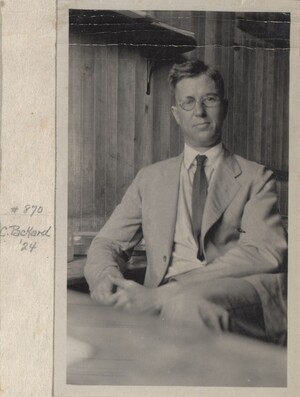The course started on Tuesday, June 20 and ended on Wednesday, July 26, lasting just over five weeks. Most days started with a morning lecture, and then continued with experiments during the afternoon, which often extended late into the night. It did not mean that students did not have chances to enjoy the ambience of Woods Hole, but that the rhythms of the developing organisms often dominated the pace of other activities. We learn about what happened from four lovely course reports published in the Collecting Net and written by Frances Paul from Oberlin College. As Paul described it, “Late in the evening one might hear, “Yes, I’ll go down town for a cone, but I have to be back in time to see the sixteen-cell stage!’”
The experiments were arranged based on which organisms they could obtain, with a focus mostly on invertebrates. After observing fish development during the first week, students hunted various coelenterates in the waters of Woods Hole, observed squid development especially of the nerves and eyes, and later studied echinoderms, annelids, mollusks, crustaceans, and tunicates. Special topics of lectures and experiments on fertilization and cell lineage were also arranged to accentuate the important themes of the field and to compare across species and phyla. The students looked closely at details of cellular organization including organelles and polar bodies, watched cell cleavage, and observed all the parts of the cell and its membrane as it underwent fertilization, then cell division, and differentiation as the cells became specialized into definite parts of the whole organism.
The course also emphasized the rich history of the field. Goodrich’s opening lecture provided an introduction to the historical phases of embryology, and Charles Packard, then the director of the MBL, dedicated one lecture to the history of embryology and the MBL. The Driesch-Roux debate on what drove development and previous studies on cell lineage contextualized the work at hand, as well as introducing issues of whether development occurs because of preformation, in which the parts are already laid out early in the developmental process, or through a gradual and more epigenetic process, by which the organism acquires is parts only over time as it develops. Through the course, students learned basic techniques in preparing, observing, and recording the development of various embryos.

